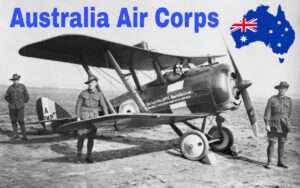.Q- Why hills are cooler during summer season and people prefer to the hill stations?
Answer- Hills are at a very high altitude so because of high altitudes the atmosphere of the Earth becomes less dense which leads to a decrease in the temperature of that area. That is why hilly regions are cooler in the summer season and people prefer to go to the hill stations in the summer season.
Class 9th Important Questions
- ‘The treaty of Versailles was humiliating on the Germans.’ give reasons to support your answer.
- Why has Leh moderate precipitation almost throughout the year
- What is Coriolis force?
In the above question, it was asked why hills are cooler during summer season and people prefer to the hill stations. So, the main reason behind the cool climate of hilly regions during summer is its high altitude. As the hill stations are at very high altitudes.
So, the Earth’s atmosphere became less dense which leads to a decrease in atmospheric temperature in hilly areas. At the end of this post, we would like to tell you some very important questions about the class 9th examination. If you are a student of class 9th so you should learn these questions and answers for making your exams preparation better.
All the content that we are going to provide you is only for educational purposes and if you want to gain extra knowledge so you can read it. Here we are going to tell you about a very trending topic that is ‘The Australian Air Corps’. So, continue reading this awesome article about it.
Australian Air Corps- why hills are cooler during summer season
The Australian Air Corps was also known as the AAC in short form. The AAC or Australian Air Corps was a temporary formation of the Australian military that existed in the interval between the disbandment of the Australian Flying Corps (AFC) at the time of World War I and the establishment of the Royal Australian Air Force (RAAF) on March month of the year 1921. The Australian Air Corps was commanded by Major William Anderson who was also a former pilot in the Australian Flying Corps. Most of the members of the Australian Flying Corps were also from the Australian Flying Corps and would go on to join the RAAF.

Along with the disbandment of the Australian Flying Corps, the Australian Air Corps was a stop-gap measure intended to remain in place until the formation of a permanent as well as the independent air force for Australia. One of the primary purposes of these corps was to maintain all the assets of the Central Flying School at Point Cook, Victoria. But at that time several pioneering activities also took place under its auspices: The Australian Air Corps personnel set an Australian altitude record that stood for a decade. This made the first non-stop flight between Melbourne and Sydney.
This undertook the country’s initial steps in the field of aviation medicine. The operated fighters in the Australian Air Corps, bombers, and training aircraft, including some of the first examples of Britain’s Imperial Gift to arrive in Australia. The Australian Air Corps was an interim organization that was intended to remain in place until the establishment of a permanent Australian air service. If you don’t know why hills are cooler during summer season and people prefer to go to the hill stations. So, the detailed answer is given above.
Major General Gordon Legge
In November month of the year 1919, by the direction of the Chief of the General Staff and Major-General Gordon Legge, its prime purpose was to ensure that existing aviation assets were maintained. Later he added that it should also perform suitable tasks such as surveying air routes. The Chief of the Naval Staff, Rear-Admiral Sir Percy Grant, objected to the AAC being under Army control and argued that an air board should be formed to oversee the AAC and any permanent Australian air force.
A temporary air board first met on 29 January of the year 1920, the Army of Australia being represented by Williams and Brigadier-General Thomas Blamey, and the Royal Australian Navy by Captain Wilfred Nunn and Lieutenant Colonel Stanley Goble, a former member of Britain’s Royal Naval Air Service that is also known as RNAS then seconded to the Navy Office. The Williams was given all the responsibility of administering the Australian Air Corps on behalf of this board.

1 thought on “Why hills are cooler during summer season – Class 9”